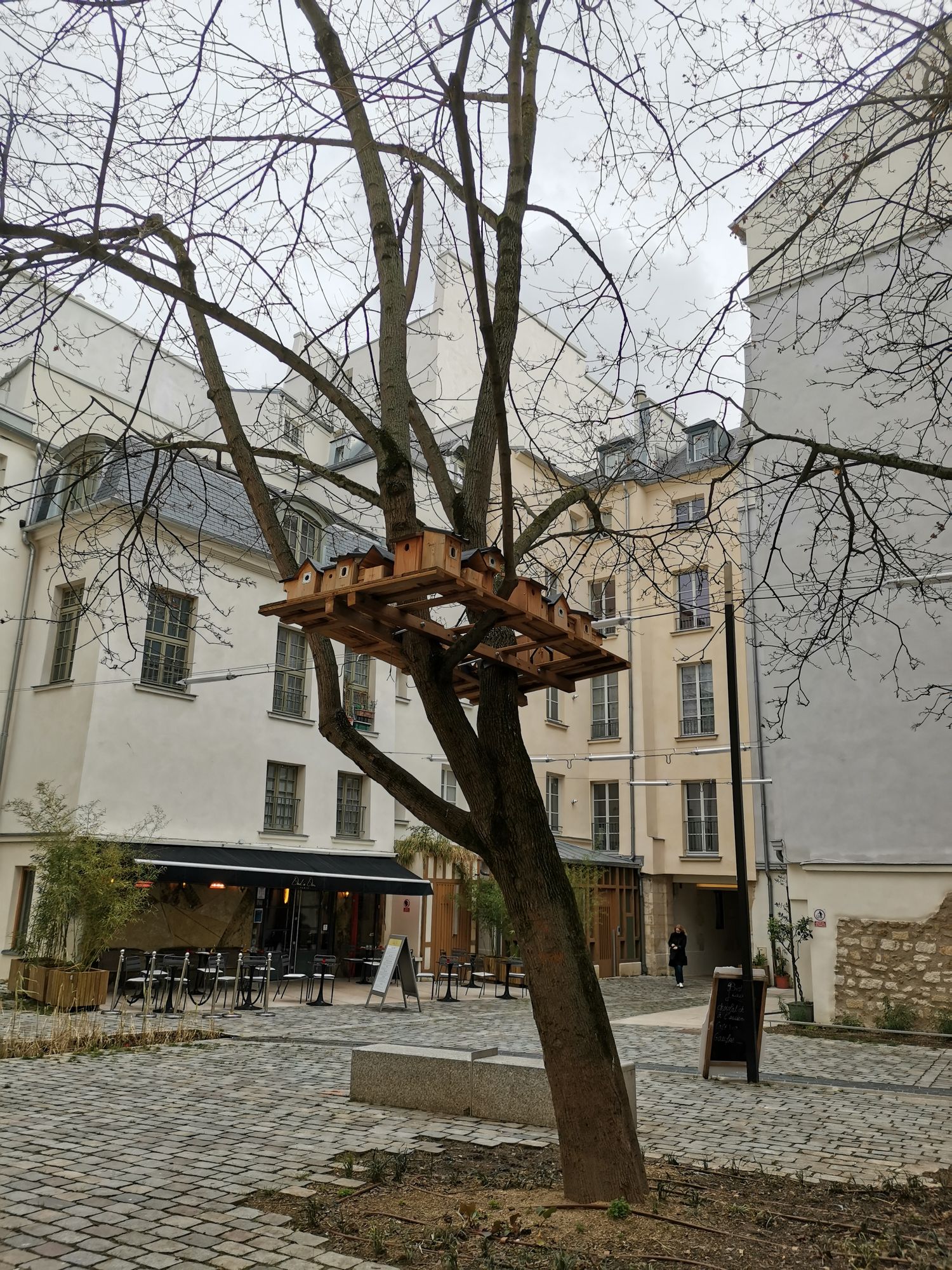The Village Saint-Paul

What is the origin of Village Saint-Paul?
Village Saint-Paul traces its roots back to the 13th and 14th centuries. Initially, the Marais was on the outskirts of Paris, protected by Philippe Auguste's enceinte built between 1190 and 1210.
Charles V, the future king, decided to leave the Louvre and, from 1360 onwards, undertook the construction of l'hôtel Saint-Paul in the current area of rue Saint-Paul, rue Saint-Antoine, rue du Petit Musc and the quays. This site was a collection of houses surrounded by gardens.
How did the Marais district develop around the Hôtel Saint-Paul?
The construction of the Hôtel Saint-Paul attracted courtiers, merchants and workers, leading to significant population growth.
Charles V also had a new wall built, integrating the Marais district into the city.
What role did Henri IV play in the district's development?
Around 1550, the Hôtel Saint-Paul was dismantled, and Henri IV gave the district its letters of nobility. The Place Royale, today's Place des Vosges, was completed in 1612, marking the heart of a district filled with numerous private mansions.
What events marked the end of the Marais' golden age?
The French Revolution marked the end of the Marais' golden age. Most of the hotels were abandoned, sold or seized, and the church of Saint-Paul did not survive the Revolution. But our expert Marais guides will show you a beautiful vestige of this church.
How did the Marais evolve in the 19th century?
The Marais underwent major transformations in the 19th century. It became a working-class district, with hotels transformed into apartments, craftsmen's workshops in the courtyards, and facades heightened in an anarchic fashion.
How was Village Saint-Paul saved from demolition?
After the First World War, an insalubrious zone was demarcated in Paris, threatening the destruction of the western part of rue Saint-Paul. However, the Village Saint-Paul was preserved thanks to affordable rents, attracting many residents from modest backgrounds.
How was the renovation of Village Saint-Paul carried out?
In 1941, the prefecture of the Seine carried out an expropriation operation in the insalubrious islet number 16, but rehabilitation only took place later.
Between 1970 and 1985, under the direction of architect Félix Gatier, a clean-up operation was carried out. Buildings were demolished to create courtyards, and new concrete buildings were erected. The preserved buildings were restored, housing was improved and commercial premises were created.
How has Village Saint-Paul evolved in the 20th century?
In 2018-2021, Village Saint-Paul was renovated in its 1970s structure by Régie immobilière de la Ville de Paris. Today, it comprises 243 social housing units and 80 stores. It's a peaceful spot in the Marais district, ideal for strolling.
Village Saint-Paul, located in the heart of Paris, bears witness to a rich and complex history, reflecting the city's evolution over the centuries. A place that has preserved its charm and authenticity despite the tumultuous changes of history.
Le Village Saint-Paul in brief
The Village Saint-Paul, built on the former gardens of King Charles V, was restored and developed under the direction of Félix Gatier architecte DPLG from 1970 to 1981.
A particularly peaceful spot in the Marais district, it's a great place for a stroll.
Discover the Village Saint-Paul website
Some photos of Village Saint-Paul
Click on photo to enlarge







